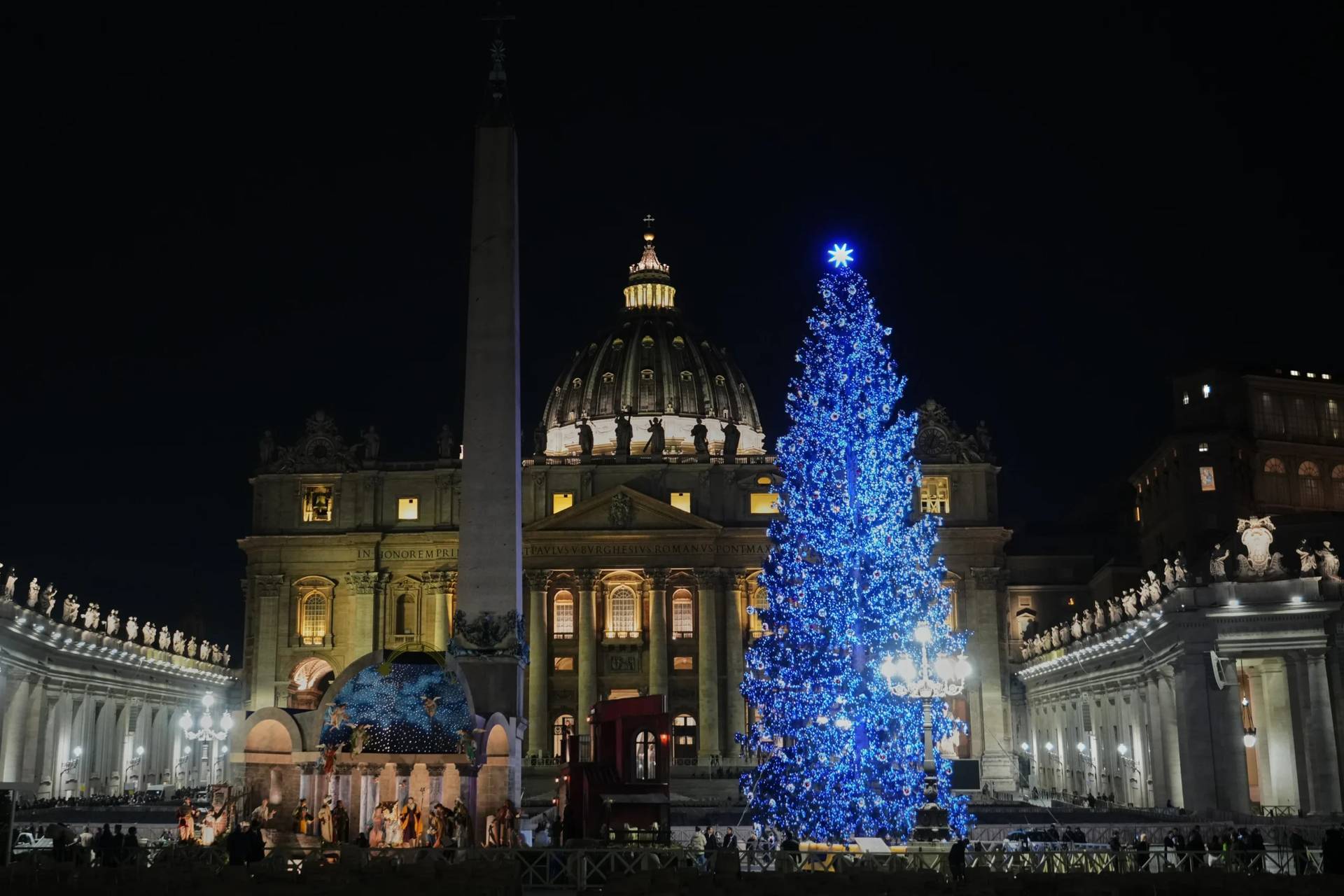ROME – While in the United States holiday celebrations have already drawn to a close, children in Italy are delighting today in one final taste of Christmas celebrations, when, on the feast of the Epiphany, they find stockings full of sweets and treats left for them by the folklore figure of “Befana.”
Any Roman child knows that there is no place more fantastic, fun and delicious to celebrate this sweet festivity than in the historic and oval-shaped Piazza Navona …. or, at least, it used to be.
Several years ago, a former mayor of Rome launched a crackdown on the traditional festivities in Piazza Navona, charging corruption among a prominent family that more or less ran the show. Since then, entrepreneurs have been trying to launch a comeback, but today they say even the appeal of Pope Francis may not be enough to revive the past.
“The pope is good,” says one small-time businessman who runs a booth in the Piazza Navona, “but in the past few years his popularity has diminished. The novelty has passed.”
Meanwhile, Emanuela Nardoni sits on a chair inside one of the white stands in the Piazza Navona that has managed to earn a highly sought-after spot during the holiday season. Layered with scarfs and jackets, she peruses her merchandise, hoping to sell one of her Christmas tree decorations – a white ball portraying the Colosseum with “ROME” written in bold font.
“The tourists go crazy for those,” she says.
Hanging above her head are countless images of Befana, the trickster old crone who gives candy to good children, but coal, and even garlic, to the naughty ones. Forget Santa Clause and his scarlet roly-poly appearance. No Italian child would want to sit on the Befana’s lap, with her moly half-moon nose, missing teeth and jeering eyes.
Yet, those frightening and multi-colored statuettes are still the most desired merchandise for the Romans, who will place them in their homes for an Italian version of ‘Elf-on-the-Shelf.’
“Locals will buy the Befana. I have sold so many… dozens. Especially the dancing ones,” Nardoni says with some satisfaction. “Some look for the more original-looking ones, others for ones that will not scare the children as much. But for others still… the uglier the better!”
Like many traditions, the history of the Befana is clouded in mystery, possibly rooted in ancient pagan festivities. The most commonly accepted origin is that she is no other than St. Lucia, who gave gifts to children.
Yet popular enthusiasm here generally sets aside the angelic beauty of the martyr in favor of the image of an old crone, a benevolent granny with children and a mischievous hag with adults, who flies through the sky by night on her magic broom to deliver all sorts of calorie-ridden and irresistible treats.

Despite her appearance, the Befana celebration in Rome would once draw large crowds to the piazza, especially children. Today, having surpassed the barricades guarded by several dozen armed Italian forces – a sad but necessary reality in today’s Europe –visitors will find only a few Italians strolling about, and plenty more vendors inside their stands, perusing their cellphones in boredom.
“I’m just here to do a favor for my brother-in-law,” one says impatiently. “I don’t know anything about this event.”
Nardoni also has no nostalgic tie with the traditional Roman festival. She found this job on Subito.It (a sort of Italian craigslist) and, when asked by the few buyers about the manufacturing of the many objects that crowd her stand, she answers “I don’t know” in broken English.
“Many middle-aged women come and complain to me,” she says. “They say: ‘Do you remember how it used to be once?’ No. I’m not even from here.”
Only a few of Rome’s traditional Befana attractions remain in Piazza Navona. Cotton candy machines still fill the air with sweet-powdered scents, giant stuffed animals await to be won by a well-aimed contestant, and the hearty warmth of roasted chestnuts offers a temporary refuge from the chilly bursts of wind.
At the center of the square a splendid carousel, with gilded horses and chariots led by trumpeting cherubs, still provides the place its radiant and spinning heart.
During other times of the year tourists come here to see the masterful fountain by the Renaissance sculptor Bernini. His rival, Borromini, was commissioned to build the church of St. Agnes of Agone overlooking the square.
It is said that out of spite, Bernini made one of the figures that populate the central fountain recoil as if in horror of the church before him, and Borromini responded by making the statue of St. Agnes look away with bashful disgust.
Today, a much more playful rivalry animates Piazza Navona.
Two stands face one another across the square. One belongs to Giuseppe and the other to Giuliano Adduocchio, brothers, who have worked cheek-by-jowl for years selling treats on the Befana. A short man from Pakistan, who the brothers affectionately call Johnny, runs back and forth from one stand to the other delivering packages and messages.
“It’s all the fault of that delinquent (Ignazio) Marino!” says Giuseppe, blaming the small turnout on the former mayor of Rome, who was ousted following public embarrassments and a direct jab by the pope. Back in 2014, Marino had declared war on the Tredicine family, which owned most of the stands at the fair. The result was a four-year hiatus when the Befana was hardly celebrated at Piazza Navona.
The launch of the new fair is focused on legality, tradition and quality. The brothers have filled their stand with local products. Torrone, a traditional southern Italian nougat, is displayed next to dried figs, licorice, candied hazelnuts and peanuts and of course piles and piles of chocolate.
Ruby-colored candied apples have the premium spot. Giuseppe, a veteran of the fair having worked there for 40 years, knows that they will be the most sought after. He claims that they were invented in Piazza Navona, though it’s a Roman tradition to claim to have invented everything.
His brother drops by good-naturedly to taunt and poke some fun at him but then smilingly admits: “He’s stronger than me. I would have thrown the towel, like a boxer.”
Despite the efforts made by the city government to raise the Befana fair to European standards, Piazza Navona remains very much rooted in the ‘tutto in famiglia’ (all in the family) Italian attitude. Giuseppe waves to his cousin in the square, describing him as “the baked chestnut man in Rome,” and familiarly salutes the head of police.
After nearly half a century working at the Piazza, Giuseppe fears no challenges ahead, but keeps hope that perhaps next year the fair will return to all its former glory. “Now I just want to go forward and support my family,” he adds.
Whether things will return to “the way they were” is still to be determined. After all, like all things rooted in childhood memory it’s hard to live up to expectations. Yet, European standards or not, no doubt the Befana celebrations in Piazza Navona still capture the spirit, taste and smell of Rome.













